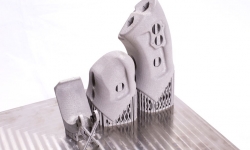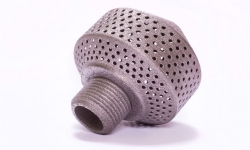Aeroswift brings a tipping point to local metal additive manufacturing industry
In 2017, the CSIR and Aerosud, an aeronautical engineering and manufacturing company, developed an advanced three-dimensional (3D) printer for metal components as part of project Aeroswift. Funded by the Department of Science and Innovation (DSI), the project formed an important part of the national titanium beneficiation strategy, which aims to transform South Africa from an exporter of raw materials to an exporter of semi-finished or finished goods.
The metal additive manufacturing system uses a laser to melt titanium powder to produce metal parts for the commercial aerospace manufacturing sector. The system can produce geometrically complex parts according to specifications, minimising material wastage while processing difficult-to-machine materials. It is also used to manufacture parts for the power generation, automotive tooling, defence and manufacturing sectors. During proof-of-concept trials, the machine achieved production speeds up to 10 times faster than currently available commercial laser melting machines.
Different from conventional manufacturing technologies, which often rely on the removal of material through a machining process to produce a final component, additive manufacturing relies on various energy depositing technologies to fuse powdered or wire-based materials into 3D functional near-net-shape parts.
New at the time of the Aeroswift launch, metal 3D printing has gone on to receive significant uptake in a number of sectors.




